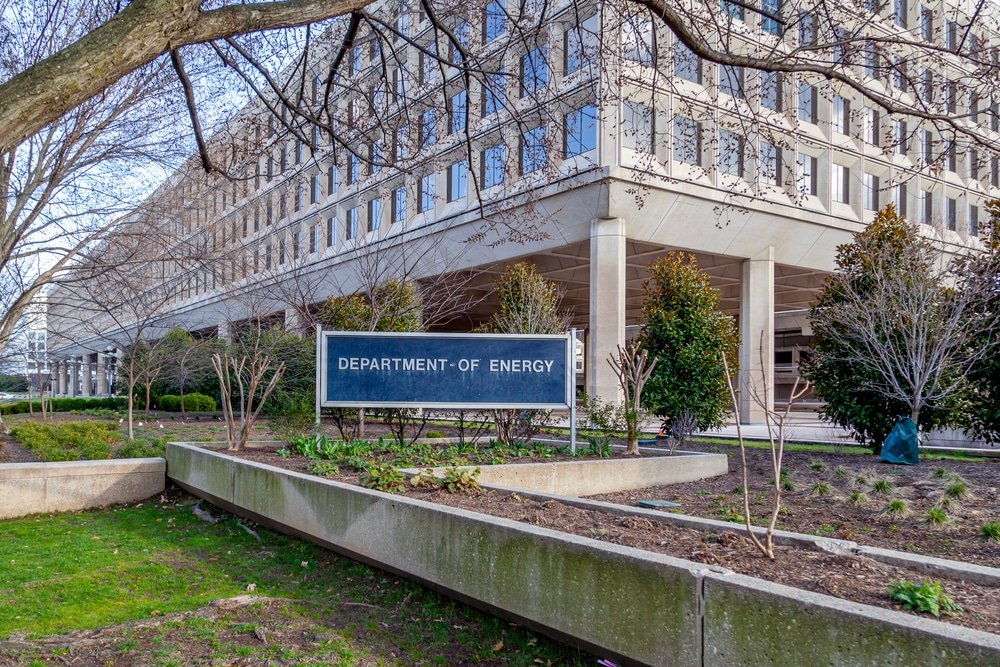The U.S. Department of Energy (DOE) rolled out $2.52 billion to fund two carbon capture initiatives that aim to speed up and boost investment in technologies that capture, transport and store carbon.
President Biden aims to bring the country to a net zero emissions economy by 2050. And critical to meeting that goal is the President’s Bipartisan Infrastructure Law, which provided the funding of the carbon capture programs.
The “Carbon Capture Large-Scale Pilots” and the “Carbon Capture Demonstration Projects Program” seek to cut carbon emissions from energy and hard-to-abate industries.
Promoting Clean Energy
The Energy Secretary Jennifer M. Granholm commented on the announcement:
“By focusing on some of the most challenging, carbon intensive sectors and heavy industrial processes, today’s investment will ensure America is on a path to reach net-zero emissions by 2050 and at the forefront of the global clean energy revolution.”
The two new carbon capture programs will help ramp up the demonstration and deployment of carbon management technologies. They will also support the current administration’s efforts to:
- create good-paying manufacturing jobs,
- reduce pollution to deliver healthier communities, and
- reinforce America’s global competitiveness in the clean energy technologies of the future.
Together, the energy or power sector and industrial sectors are responsible for a big part of the nation’s carbon footprint. Capturing carbon in the heavy industries like steel and cement is crucial to fighting the climate crisis.
This is why investing in carbon capture technologies is vital. They don’t only reduce emissions but they can also help in providing clean air and other health benefits to communities.
Carbon Capture Programs Funded
The DOE will fund the following carbon capture programs:
Carbon Capture Large-Scale Pilots:
There will be $820 million made available through this funding opportunity. That amount will be divided among 10 projects aimed at de-risking carbon capture technologies.
New carbon capture technologies are emerging from the past 20 years of R&D. The next step is to test them at larger scales to attract more capital needed for their deployment.
Funding for this program will provide the support needed to test new technologies in both the power and industrial sectors.
Carbon Capture Demonstration Projects Program:
This second program offers funding opportunities of up to $1.7 billion. It supports around six projects demonstrating commercial-scale carbon capture technologies linked with CO2 transportation and geologic storage infrastructure.
This program focuses on funding projects that can be readily replicated and deployed at power plants, and the industries of cement, pulp and paper, iron, and steel.
In December last year, DOE also invested $3.7 billion in carbon removal technologies and launched four programs. The funds also came from the Bipartisan Infrastructure Law.
They aim for the same goals. Ramping up private-sector investment and spurring advancements in monitoring and reporting practices for carbon management technologies.
What Project Applicants Should Know
The Office of Clean Energy Demonstrations is managing the programs in collaboration with the Office of Fossil Energy and Carbon Management and the National Energy Technology Laboratory.
Their task is to hasten the deployment of those carbon capture tech by scaling them up and attracting investments from the private sector.
Similar efforts are also underway such as the Carbon Storage Assurance Facility Enterprise and the Carbon Dioxide Transportation Infrastructure Financing and Innovation Act programs. They particularly focus on developing infrastructure and geologic carbon storage sites.
To be eligible for the funding programs, applicants must show meaningful engagement with and tangible benefits to the communities where their projects are found. They are also required to submit Community Benefits Plans as a scored part of their applications.
These plans, now a requirement of most DOE funding opportunities, demand applicants to detail their commitments to these areas:
- community and labor engagement,
- quality job creation,
- diversity, equity, inclusion, and accessibility, and
- benefits to disadvantaged communities.
Projects chosen under each of the opportunities have to develop and implement strategies to ensure strong community and worker benefits. They must also report on the corresponding project activities and outcomes.
DOE may issue additional funding opportunities for these carbon capture programs in the future. The Department expects issuing another carbon capture demonstrations funding opportunity for projects that are still performing front-end engineering design studies.

